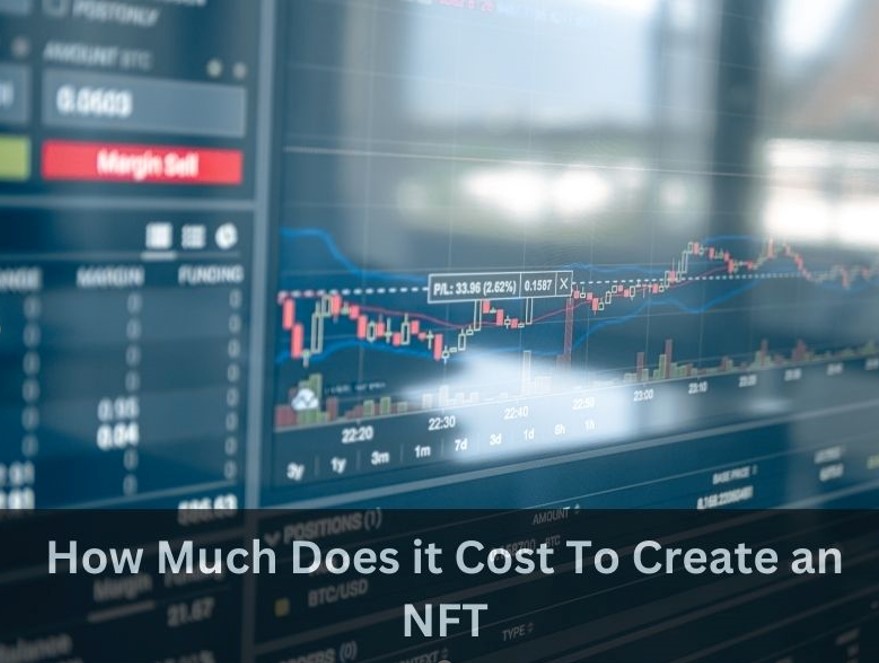NFTs are a type of digital asset that can be used for many purposes. From music to images, videos, collectibles, sports accessories, and more, NFTs are a popular way to express yourself.
However, the cost of minting an NFT can vary depending on multiple factors. Some of these factors include the Blockchain cost, gas fee, marketplace account fee, and listing fees. In this article, we will discuss about how much does it cost to create an nft
Cost of minting
NFTs are digital assets that can be created with blockchain technology. These tokens are non-fungible and can be used to purchase and sell virtual goods. Unlike metal coins, these tokens can’t be recycled or exchanged for cash. The cost to mint an nft depends on multiple factors, including the blockchain you use and the marketplace where it’s listed.
Most NFT marketplaces require you to mint your asset on the blockchain before it can be sold. This process can be expensive, as it requires computational power to mine and verify new transactions on the blockchain. However, some NFT platforms allow creators to choose lazy minting, which allows them to put off adding their assets to the blockchain until someone buys them.
This option lowers the barriers to entry for creators. It also reduces the need for expensive computational power and can help make an NFT more affordable.
Some NFT marketplaces even offer creators a free minting solution, which can be helpful for artists who want to get started with crypto but don’t have the money to invest in a full-time program. The free solution involves logging into the platform and linking your wallet to the NFT marketplace.
Several factors impact the cost of minting an nft, including blockchain fees and wallet fees. These fees vary from wallet to wallet, and depend on how you store your nft.
Another important factor is gas fees, which are charged for each transaction on a blockchain. These fees can add up quickly, especially if you have thousands of NFTs to mint.
One option to minimize gas fees is to mint your NFTs at a time when the network is less congested. This can help you save money and increase your odds of selling your NFTs.
The final factor that impacts the cost of minting an nft is the amount of traffic on the blockchain. During peak times, there may be a high number of NFTs being added to the blockchain, which can cause congestion and slow down the overall network speed.
The best way to ensure that you don’t have to pay high minting fees is to use a platform with low gas fees, like OpenSea. This platform is compatible with Metamask and offers a wide range of tools for converting digital files into NFTs.
Cost of listing
NFTs are digital assets that can be exchanged for virtual items, video games, and real world physical experiences. They’re a great way to create and distribute unique pieces of art or content, as well as build your brand and community. However, like any form of art or digital asset, the value of an NFT can rise and fall.
There are several factors that influence the cost of listing an NFT. These include data size, project quality, transaction speed, and time of minting. Additionally, the blockchain you choose to mint your NFT on can also have an impact on cost.
Some blockchains are more expensive than others, particularly during high demand, which is when gas fees surge. If you’re planning on creating an NFT that has a lot of transactions, you may want to consider using one with lower gas fees.
Another factor to consider is the number of NFTs you want to create. The more NFTs you create, the more costly it will be to create and sell them. Fortunately, you can use a strategy known as “lazy minting” to defer paying these fees until you sell your NFTs.
Many NFT marketplaces, such as OpenSea, Rarible, and Mintable, allow you to list an NFT for free. This is a great way to get your work out there and start earning a living.
These platforms offer a variety of different NFTs that you can mint. This gives you the opportunity to choose the perfect nft for your project.
In order to mint an NFT, you must first create an account on a blockchain platform or NFT marketplace. This is often free, but some blockchains do charge a small initial account fee.
Once you have created your account, you can start minting NFTs on the blockchain. These can be in various formats, including JPEG, GIF, and MP3. You’ll need to make sure that the format you choose is widely accepted and accessible on mobile devices.
The cost of minting an NFT depends on the blockchain you choose to use and how many NFTs you plan to create. It’s important to choose a platform that has low gas fees and a high market cap, as these are the most affordable options.
Cost of transferring ownership
NFTs are a new way to transfer ownership of digital and physical assets. They operate differently from traditional cryptocurrency, which uses a decentralized ledger called the blockchain to store transactions and create interchangeable “fungible” tokens. Instead, NFTs are unique and noninterchangeable and use software code to record and transfer ownership. This unique nature of NFTs ensures that each one is one of a kind.
NFT owners can transfer ownership of their NFTs to other users by uploading them to a blockchain, using software codes known as smart contracts. This process allows for ownership transfers without the need for intermediaries, such as banks or lawyers, which can be a cost and time saver for both parties involved.
If you’re transferring NFTs to others, it’s important to keep in mind that most platforms charge a fee for every transaction. This fee, known as “gas,” helps cover the computational costs associated with sending NFTs. These fees are typically high and can eat into your profits, so it’s important to pay close attention to them.
In addition, you should choose the speed of your transfer carefully. If you select the fast option, it’s likely to take longer and cost more than the slow one. You may also have to try again later if the transaction fails.
Generally, the best way to transfer an NFT is to use an NFT marketplace, such as OpenSea or Rarible. These marketplaces allow users to buy and sell NFTs, and they can help you locate the NFT you’re looking for.
Once you’ve located the NFT you want, you can then send it to someone by locating their wallet address and selecting the transfer option. Most NFT marketplaces make this process easy, and it usually only takes a few clicks of a button to complete the transaction.
However, be aware that if you decide to send an NFT to someone who doesn’t have an account with the platform, they may not receive it. This is why it’s always a good idea to verify the correct currency and payment amount before transferring any NFT.
Cost of storage
As more NFTs are being minted and listed, it becomes increasingly important to consider how they will be stored long-term. This is a crucial step in the NFT process and has implications for security, data availability, and trustworthiness of NFTs.
One popular approach to storing NFT content is through the use of IPFS, an open-source distributed file system that supports immutable files. However, this solution is not without its risks.
For example, if an NFT creator uploads an image to IPFS and the link it points to is not permanently pinned (or backed up) to an IPFS node, that image can disappear from the system.
This has a serious impact on the security of NFT assets, as users are left with no way to access their content if the underlying data is lost or deleted. In a recent scan of more than 400,000 NFTs, we found that almost 20% of NFT metadata could not be located using an IPFS link.
Another approach to storing NFTs is through the use of Arweave, an open-source peer-to-peer file storage network that offers content storage as-a-service. The network uses a dynamic pricing mechanism to ensure that data is stored permanently for a fixed fee regardless of fluctuations in hardware costs and power prices.
Unlike many of the other storage options we’ve reviewed, this pricing mechanism is based on the amount of data stored on Arweave and its costs are not borne by the owner of the NFT asset itself. This pricing model, coupled with the lack of a dedicated data hosting service, makes it difficult for consumers to understand how long their NFTs will be available on Arweave.
Additionally, there are no guarantees that the data will be available in the future, which can leave buyers feeling uneasy about their purchase. This is especially true for NFTs that are based on artwork or other high-value assets.
For these reasons, we recommend that NFTs be stored in a secure and encrypted cold storage solution. This can be a hardware wallet, like Ledger Nano, or a cloud storage solution, such as Pinata. The key is to choose a solution that’s compatible with the blockchain and marketplace used to trade NFTs.


